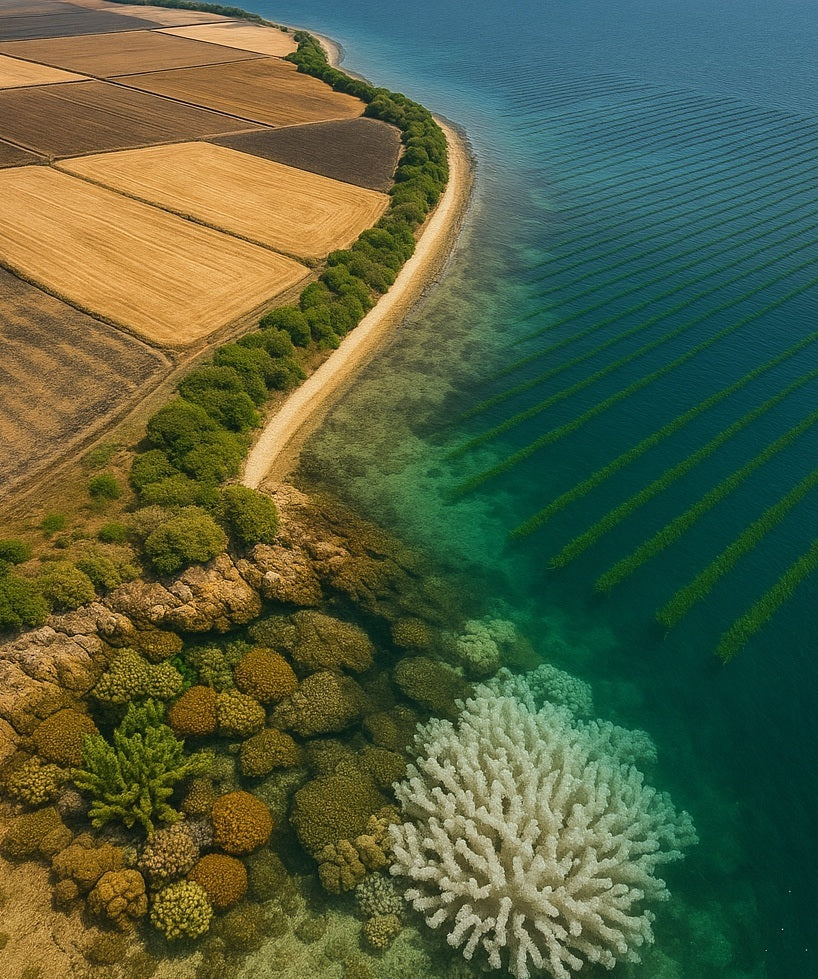Globally, freshwater demand has skyrocketed—driven largely by irrigation for fertilizer-intensive crops. Today, roughly 70% of freshwater withdrawals go toward agriculture, pushing rivers, aquifers, and wetlands beyond sustainable limits. In Australia, prolonged droughts and contentious water rights battles underscore how fragile our freshwater supply really is.
Seaweed as a Water-Smart Solution:
-
Zero Freshwater Requirement: Seaweed cultivation relies entirely on seawater—no additional freshwater extraction is needed. By replacing even a fraction of a freshwater-demanding crop (e.g., rice or lettuce) with seaweed, we eliminate irrigation pressure for that yield.
-
100% Reduction in Freshwater Footprint: Every ton of seaweed we produce on seawater sidesteps the typical 1,000–1,500 liters of freshwater that terrestrial vegetables or cereals would require. In other words, for the same nutritional output, we achieve a complete freshwater savings.
-
Relief for Water-Stressed Regions: In regions like New South Wales, where river flows are already over-allocated, shifting dietary or feedstocks toward seaweed can free up aquifers and surface water for critical human and ecosystem uses.
By cultivating high-yield seaweed on saltwater, we take pressure off rivers, aquifers, and the ecosystems that depend on them. Farming seaweed is not just “no freshwater needed”—it’s a direct countermeasure to water scarcity, aligning agriculture with the natural availability of Earth’s most precious resource.
